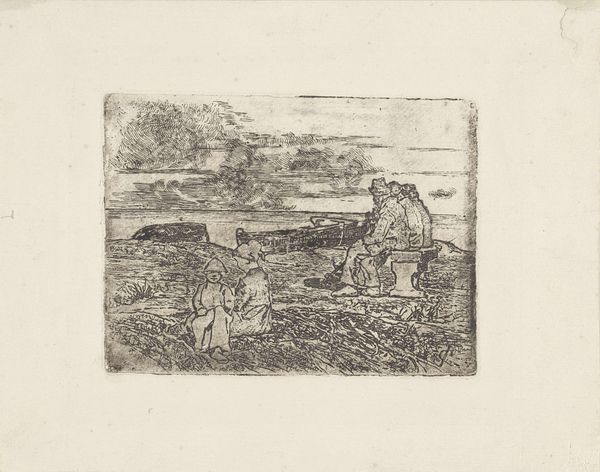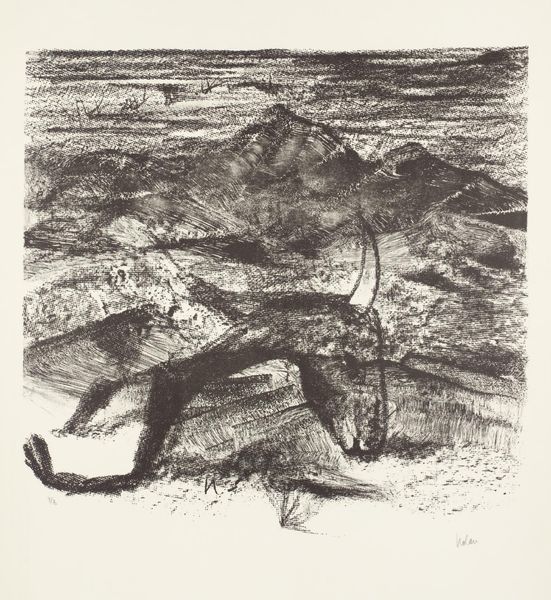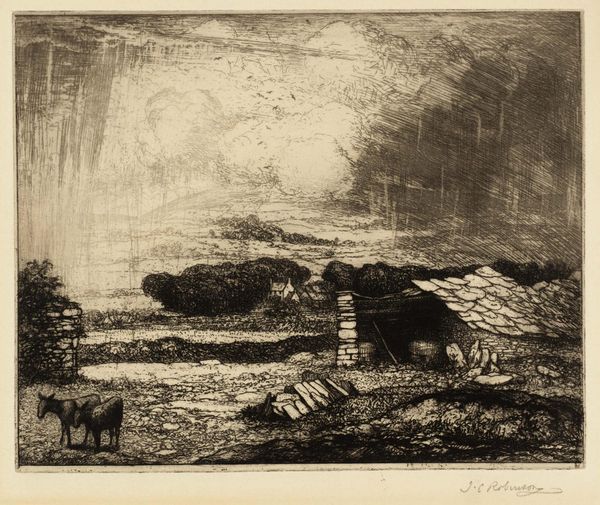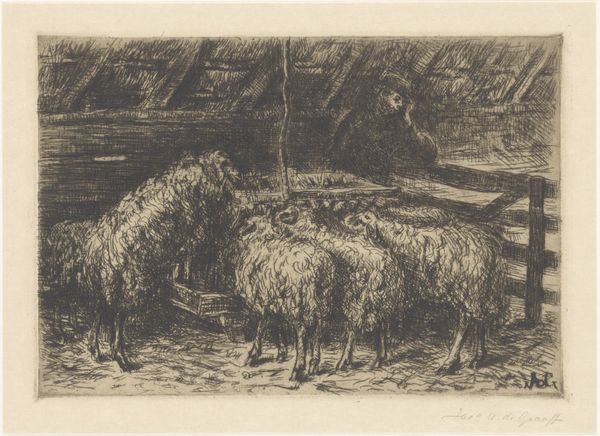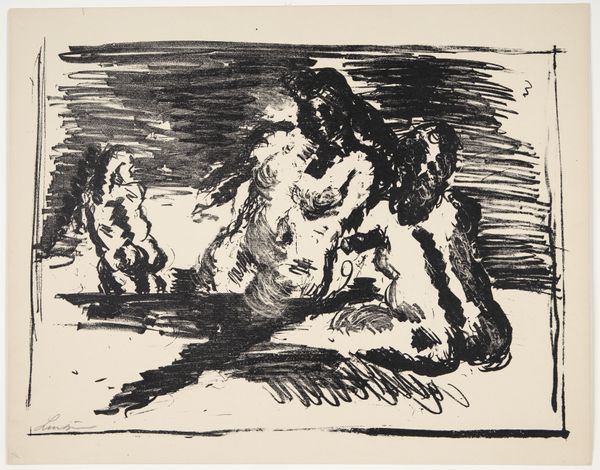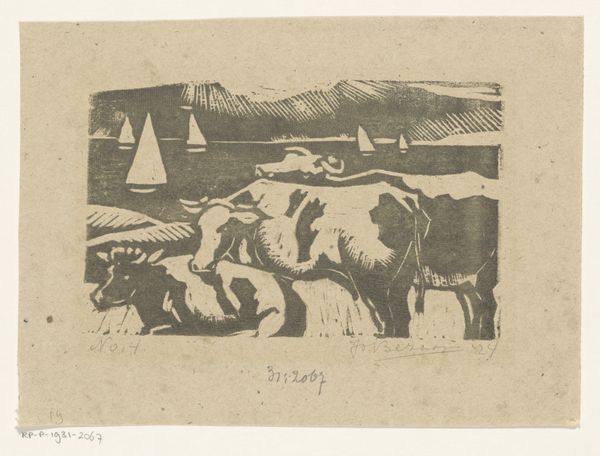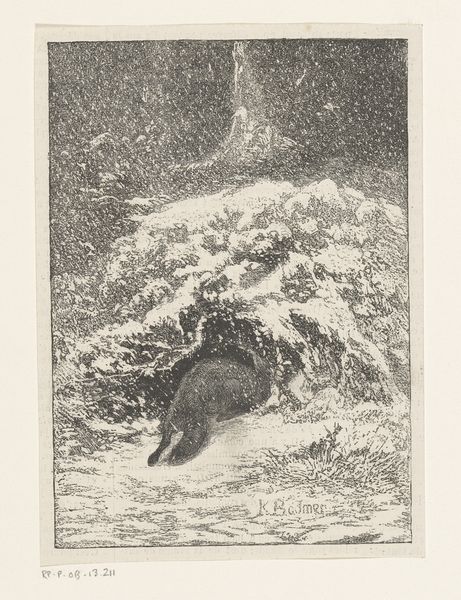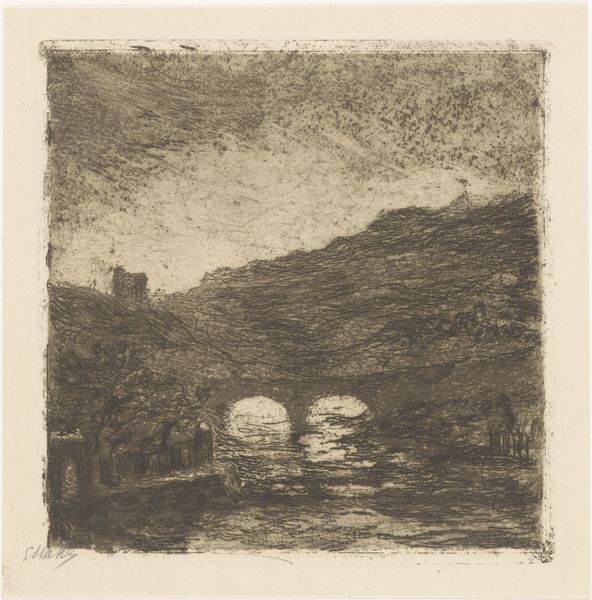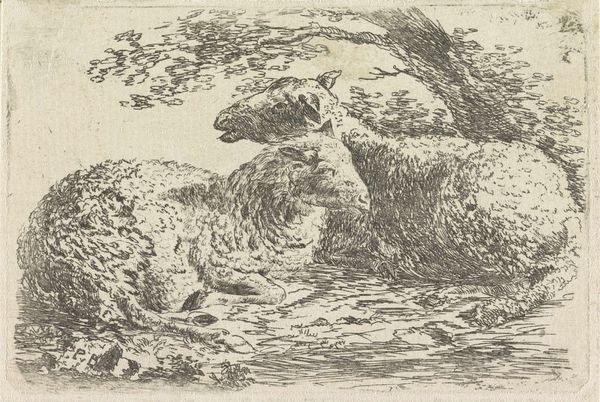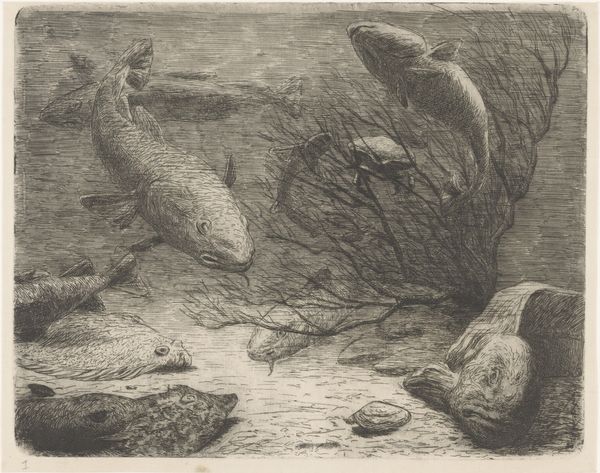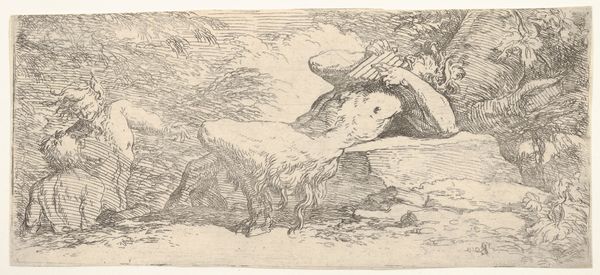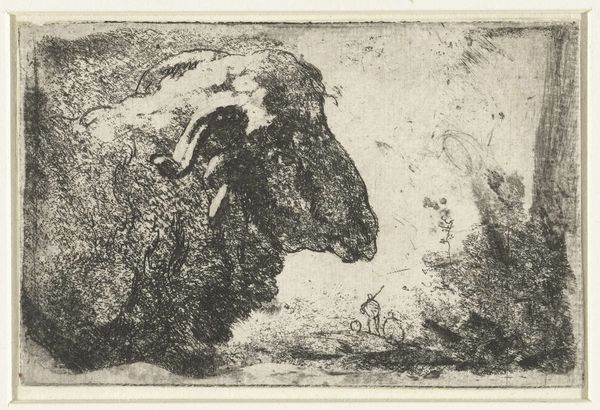
print, etching
#
baroque
#
animal
#
dutch-golden-age
# print
#
etching
#
landscape
#
genre-painting
Dimensions: 75 mm (height) x 95 mm (width) (plademaal)
Curator: Here we have Karel Du Jardin's etching, "To får", created sometime between 1626 and 1678, part of the Dutch Golden Age. Editor: My immediate impression is one of exhaustion. The weight of the world seems to press down on these animals, emphasized by the dense hatching above. Curator: Yes, that use of line is interesting. The domestic animal often stands as a symbol of innocence or vulnerability. The print is rather small, which adds to the sense of intimacy. Do you see a kind of allegorical significance to the dogs' prone posture? Editor: Definitely. Consider the Netherlands in that period – a republic built on mercantile success, yet reliant on exploited labor and colonial extraction. The seeming pastoral tranquility masks a brutal reality. Could these dogs represent the apathy of a populace complicit in injustice? Curator: That's a potent reading! It reflects our modern understanding of intersectionality, yet connects to age-old themes. There's a moral dimension in their stillness that contrasts starkly against our culture’s constant demands for productivity. Editor: Right. And within that baroque period, Dutch art had this tension: realism emphasizing tangible material wealth paired with a rising moralistic tone amid global shifts in power dynamics. So, these humble animals are not merely "dogs"—they bear witness to both a world in transition. Curator: The shadow gives that air of the dogs silently carrying the secrets that support Dutch society, perhaps not openly spoken about. It reveals cultural memory within the seemingly mundane depiction. Editor: Perhaps even a reflection of a more expansive sense of empathy for the place and function of animals—a budding eco-consciousness—arising out of a conflicted history? Curator: This speaks volumes about how enduring archetypes intertwine art, identity, and collective anxiety across eras, doesn’t it? It highlights the role art has in provoking self-reflection for society through something simple at first glance, like resting dogs. Editor: Indeed! An image seemingly of simple rest invites broader recognition about how different levels of social reality intersect with historical experience, as the past constantly reflects, shapes, and speaks through us today.
Comments
No comments
Be the first to comment and join the conversation on the ultimate creative platform.

